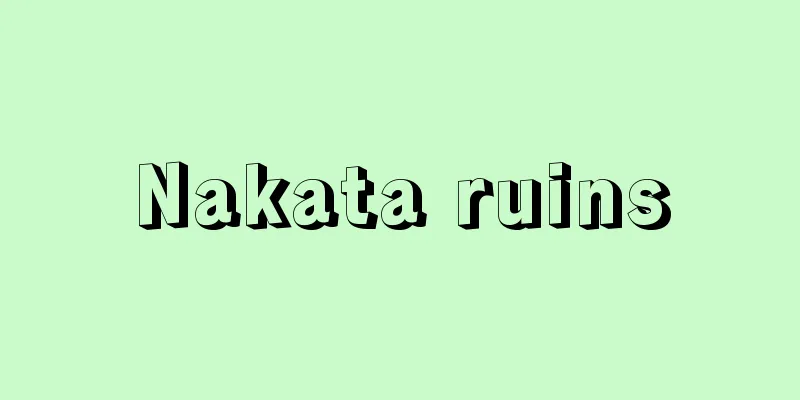Honjo method - Honjo method

|
Laws for the management of household affairs and the control of manors by manorial lords. In the mid-11th century, with the establishment of the manor and public land system and the establishment of a litigation system unique to the powerful families, a new legal domain was established that excluded the laws of the Ritsuryo state, and it came to function within the scope of the jurisdiction of the honjo ryoke, which was relatively independent from the laws of the nobility and samurai. In principle, honjo trials had jurisdiction over lawsuits in which one of the parties included a related party, or which concerned the office controlled by the honjo, and in some cases the nobles delegated jurisdiction to the honjo. The trial hearings were called mandokoro monchu, and were often based on the kanmon of the myobouka. Sometimes messengers were sent to the site as jige monchu, and mediation was carried out in the presence of the related parties at the manorial office or other places. For this reason, Honjo law was established including local customary laws such as "Jika no Rei" and "Tomisho no Rei" along with the court noble law that succeeded the Ritsuryo law. At the center, punishment was detention in a household institution or exile to a family estate, while locally, thieves and murderers were banished to the manor and their property was confiscated. Furthermore, the Kokuga and Kebiishi-cho could not pursue manor residents, Yoryudo, or Jinin without the permission of Honjo. In Honjo law, a lawsuit always required the identification of the perpetrator and the burden of proof, while the decision of which Honjo court to file a lawsuit in and whether to accept the judgment was left to the parties involved. As a result, lawsuits were often prolonged and multiple judgments were issued for the same case. [Ihara Kesao] Source: Shogakukan Encyclopedia Nipponica About Encyclopedia Nipponica Information | Legend |
|
荘園(しょうえん)領主による家政運営と荘園支配のための法。11世紀中期には荘園公領制の成立、権門(けんもん)独自の訴訟体系の成立に伴って、律令(りつりょう)国家の法を排除した新たな法圏が成立し、公家(くげ)法・武家法から相対的に独立した本所領家の裁判権の及ぶ範囲で機能するようになった。本所の裁判は、一方の当事者にその関係者を含むか、本所が支配している所職(しょしき)に関する訴訟の管轄を原則とし、公家から本所に裁判権が委任される場合もあった。その裁判審理は政所問注(まんどころもんちゅう)といい、多くは明法家(みょうぼうか)の勘文(かんもん)に基づいて行われた。ときには地下(じげ)問注として御使(おつかい)を現地に送り荘政所などで関係者立会いで調停がなされる場合もあった。このため、本所法は律令法を継承した公家法とともに、「地下之例」「当御庄例(とうみしょうのれい)」など在地での慣習法を含んで成立していた。刑罰として、中央では家政機関への拘禁や家領への流刑、在地では盗犯殺害人の荘内追放・財産没収などが行われた。なお、国衙(こくが)や検非違使庁(けびいしのちょう)は、本所の許可なしに荘民や寄人(よりゅうど)、神人(じにん)らを追捕(ついぶ)しえなかった。本所法では、提訴にはかならず犯人の指摘と挙証責任が負わされる一方、どの本所の裁判に訴えるか、その判決に服するか否かは、当事者の問題とされた。そのため、訴訟の長期化や同一事件について複数の判決が分立することも多かった。 [井原今朝男] 出典 小学館 日本大百科全書(ニッポニカ)日本大百科全書(ニッポニカ)について 情報 | 凡例 |
>>: Honshobutsu (English spelling) Ādibuddha
Recommend
Kinaraia tribe
The Ilonggo (also called Hiligaynon; 4.2 million)...
Eniseiskii Samoed (English spelling)
…After the 1917 revolution, the name Samoyed came...
Ursula Kroeber Le Guin
1929‐ American female science fiction writer. Born...
Russell, R.
...Hotels, theaters, and entertainment facilities...
Disproportionation - Fukimuka
A reaction in which two or more molecules of one ...
Okabe Rokudayu
…(1) The Musashi Seven Clans, Ono Family, Inomata...
Castorium - Castorium
…Also called castoreum. A fragrant substance made...
Hel Peninsula - Helhantou
Mierzeja Helska is a peninsula in the Gdansk Bay o...
lesser yam (English spelling) lesseryam
...It is widely distributed and is an important f...
Vimalakirti - Yuimakoji
The name of a layperson who plays a central role i...
Broadcasting satellite
Satellite broadcasting is a system in which telev...
Boomerang - Boomerang (English spelling)
A hunting tool used by Australian aborigines. It ...
Vieussens, R.
…During the Edo period, diseases accompanied by c...
snobisme
…After WM Thackeray completed his serial essays t...
Roth, KF (English spelling) RothKF
…The theory of transcendental numbers is closely ...









